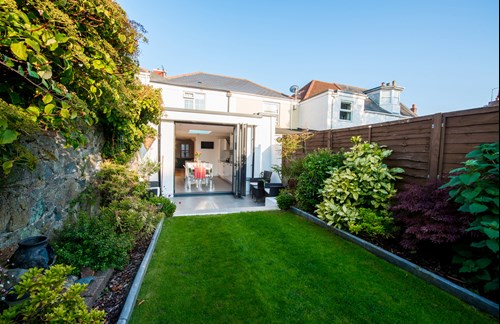If your home isn’t working for the way you live or you’re thinking of buying a property that needs upgrading, you may be considering having an extension. With advice from Create Chartered Architects, you can improve your home without breaking the bank.
Architects don’t complain if they are given a brief to push the boat out, with a budget to match, but most clients aren’t multi-millionaires. However modest your budget, Create Chartered Architects’ expertise and insider knowledge can save you money and enable you to achieve a fantastic result. ‘A good architect will advise you how to cut costs but add value through quality design,’ affirms Technical Director Ricky Mahy.
-
Keep it simple. To cut costs, keep your design simple. A rectangular or square footprint with a pitched roof will be cheaper to build than curves and corners. Avoid the need for bespoke products by asking your architect to design around off-the-shelf products, such as standard-size doors and windows, and stick to materials that are readily available. Groundwork costs will be higher if you build near to trees, drains or sewers, so steer clear of these if you can.
‘One size doesn’t fit all in an extension but you can keep the cost down by asking your architect to keep your design simple. Do remember that you have to be sympathetic to the building, however,’ advises Ricky. ‘Your choices will be more restricted if you live in a period or listed property.’
- Project-manage the build. Becoming a project manager isn’t for the faint hearted but for the time-rich yet cash-poor, it will cut costs. A builder will typically add onto the cost of labour and materials to cover their time for managing the project. Taking on the role of project manager involves liaising with your architect and the Environment department, finding and hiring tradespeople, directing the work and supplying all of the necessary materials, including scaffolding, skips and so on. You’ll need to factor in the likelihood that the project will take longer to complete with you at the helm.
- DIY if you can. If you have the skills and confidence to do some of the work yourself, you can make savings on labour costs, which account for between half and two-thirds of the outlay for a typical extension. The easiest tasks to take on are labouring and decorating, followed by kitchen and bathroom fitting, tiling and fixing architraves, coving and skirting boards. Unless you are an expert, don’t be tempted to undertake skilled work such as bricklaying and plastering.
- Reduce your costs. Not all development and building work requires planning permission or the issuing of a Building Regulation Licence, however it is always advisable to employ an architect. Go to gov.gg/planning_building_permissions to download the Householder’s Guide ‘Do I Need Permission for my Development?’ For example, an extension with a floor area not exceeding 20 square metres does not need planning permission. If your project doesn’t meet these criteria, find an architect who will produce planning and Building Regulations drawings for a fixed price. Look for a track record in designing low-cost projects; Create have a wealth of experience in this area.
- Use reputable builders. Never pay for building work in advance, although for a larger project it’s reasonable to agree payments at set stages, or interim payments based on a verifiable list of labour and materials used up to date.

